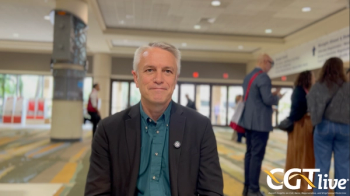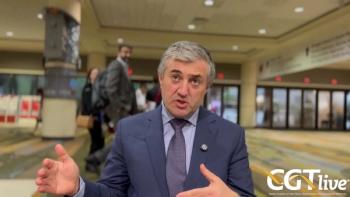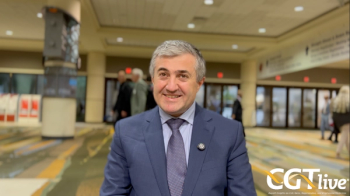
Investigating Strategies to Treat SCD Using Gene Therapy
An expert in hematology/oncology discusses the emerging role of gene therapy to treat sickle cell disease.
Michael R. DeBaun, MD, MPH: The topic of gene therapy and gene editing in sickle cell disease in and of itself is a misnomer. What has to be acknowledged is that the terminology should probably be referred to as myeloablative gene therapy and myeloablative gene editing. Why is that important? It’s important because as a former oncologist, I know that when you treat someone with myeloablative therapy, in this case, busulfan for both gene editing and gene therapy, you may cause unwanted effects 5 years down the road. The key is to recognize that when you provide myeloablative therapy to a 10-year-old, you would want to follow them for the next 50 years to know what the effects are. We know from late health effects of chemotherapy, specifically hematopoietic stem cell transplant, that there is no plateau for cardiovascular risk and other complications associated with curing a child with hematopoietic stem cell transplant. That’s the first challenge that I think we need to address. Also, families need to understand that it’s not just gene therapy and gene editing; it’s myeloablative gene therapy and gene editing. Furthermore, the field is moving forward so that 5 years from now, maybe 10 years from now, we may have nonmyeloablative gene therapy and gene editing, which we hope would decrease the sequelae associated with myeloablative therapy.
The second point is that these therapies are experimental. They are the newest approaches to curative therapy in children and adults with sickle cell disease. They were developed because the donor pool was small for individuals who wanted to be cured from sickle cell disease. Specifically, for the gold standard approach, which is myeloablative, matched related donor transplant, which has been in existence for over 25 years in sickle cell disease, you had to have an instantly matched sibling donor. Unfortunately, less than 15% of individuals had donors who met the criteria of being a matched related donor. Thus, there had to be a strategy to increase the donor pool, and gene therapy was the original alternative 25 years ago. There are people who’ve worked in this field for over 2 decades because they recognized that you needed to expand the donor pool. Potentially the best donor would be the patient’s own cells. That’s No. 1. But then No. 2 is this challenge of myeloablative chemotherapy. Apparently, gene therapy and gene editing require myeloablation. As a result, many adults with comorbid conditions of heart, lung, or kidney disease could not undergo curative therapy.
What’s happened in the last decade is that there’s been what we refer to as haploidentical transplant with post-transplant cyclophosphamide. Why is that important? First, this therapy does not require myeloablation. You use a nonmyeloablative preparative regimen, which is much more amenable for adults who have chronic heart, lung, and kidney disease, which many of our adults with sickle cell disease have. Second, the donor can be a half match. Thus, in systematic studies that have been done, not only in the United States but in other areas of the world, the donor pool for patients with sickle cell disease is about 90%. In other words, 90% of individuals who want to have curative therapy, have the availability as a result of having a half match, and that’s typically a parent or it could be a sibling. Or it could be a child of the individual who wants to be cured. Consequently, there’s a much more expansive pool.
Now, when an individual with sickle cell disease comes in, and says, “I want to be cured of my disease,” there’s no longer just a single approach. If you don’t have a matched related donor, you still have these alternative strategies. You have the myeloablative approach, you have a nonmyeloablative approach for a matched related donor. Then, you have the nonmyeloablative haploidentical transplant protocol. I would consider all of these therapies that I just mentioned to be experimental. They should be done in a clinical trial setting with a data and safety monitoring board to address safety and utility of the clinical outcome. I would discourage single center trials as a strategy unless there are high levels of oversight and the benefits clearly outweigh the risks compared to the existing trials available at clinicaltrials.gov.
Transcript Edited for Clarity
Newsletter
Stay at the forefront of cutting-edge science with CGT—your direct line to expert insights, breakthrough data, and real-time coverage of the latest advancements in cell and gene therapy.





































